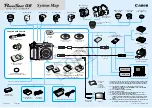
Triggering
211
Goldeye G/CL Technical Manual V4.2.0
Trigger rules
1. The
end of exposure
always triggers the next Readout.
2. The
end of exposure
must always end after the current Readout.
3. The
start of exposure
must always correspond with the Interline Time if
Readout is true.
4.
Exposure start delay
is equal to the Readout time less the Registered Exposure
Time.
Triggering during the Idle state
For applications requiring the shortest possible trigger latency and the smallest
possible trigger jitter the user trigger signal should be applied when Imaging is
false and Idle is true. In this case, trigger latency and trigger jitter can take the
values shown in
.
Triggering during the readout state
For applications requiring the fastest triggering cycle time during which the camera
image sensor is exposing and reading out simultaneously, then the User trigger
signal should be applied as soon as a valid trigger Ready is detected. In this case,
trigger latency and trigger jitter can take the values shown in
.
Minimum user trigger pulse width
The user trigger pulse width should be at least three times the width of the trigger
latency.
Trigger latency on LineIn1 (TTL)
0.6 µs (max.)
Trigger latency on LineIn2 (opto-isolated)
3.5 µs (max.)
Trigger jitter on both LineIn1 and LineIn2
1 pixel (max.)
Table 138: Trigger latency and trigger jitter during the idle state
Trigger latency on LineIn1 (TTL)
1 line (max.) + 0.6 µs (max.)
Trigger latency on LineIn2 (opto-isolated)
1 line (max.) + 3.5 µs (max.)
Trigger jitter on both LineIn1 and LineIn2
1 pixel (max.)
Table 139: Trigger latency and trigger jitter during the readout state
















































